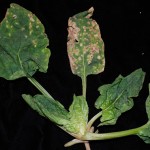The second FDA Proposed Produce Food Safety Rule Q & A conference call, coordinated by the Produce Safety Alliance, was held yesterday. This conference call focused on agricultural water use in the proposed rule. To comment on these proposed rules go to Docket Folder Summary: Standards for the Growing, Harvesting, Packing, and Holding of Produce for Human Consumption. Comments are due by May 16, 2013
Here are the highlights of yesterday’s conference call: [Read more…]

 Brood II of the
Brood II of the 